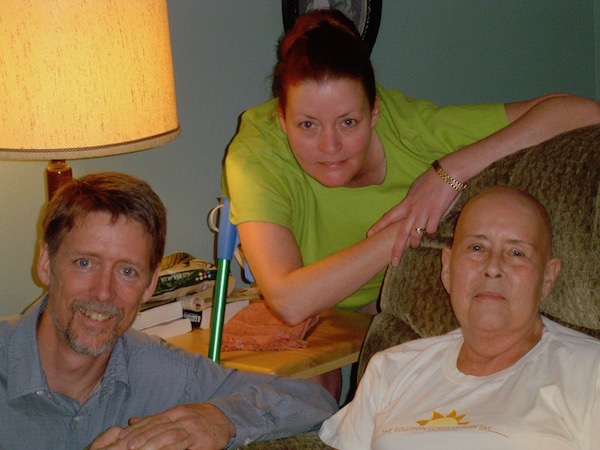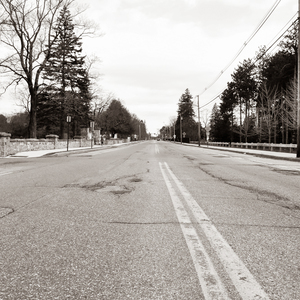
Well, there’s nothing like a little pandemic to completely upend our daily lives as well as our short and long-term outlooks for the future. I’ve spent far too much time reading about, listening to, and watching news about the novel coronavirus lately and I guess you may have done likewise. Here’s an update of what’s happening at Energy Vanguard as well as some good resources I’ve found.
What Energy Vanguard is doing
We’re still operating at full capacity but we made the decision for all of us to work from home starting Friday, 13 March. Although one EVer was sick last week, it probably wasn’t from coronavirus and she has mostly recovered now. Some of our work has slowed down, but we haven’t seen much change in our HVAC design business…yet. We’ll have to see how badly the economy gets hit for the longer term effects to show up. Energy Vanguard has five employees (counting me) and we’re hoping to keep everyone fully employed through this. By the way, you can help by pre-ordering the book I’m writing.)
Good general sources about coronavirus
I’ve been watching the numbers of cases obsessively for over a week now, and the site I check most frequently to see how many cases there are, the rate of new case growth, and more is:
Some other good sites are:
The New York Times coronavirus page
CNN and the Times update their pages more frequently than the CDC. The Worldometers site has a chart of the new cases reported each day. Here’s the one on their site that shows new cases confirmed each day, through 24 March 2020.
![New coronavirus cases in the US by day, through 24 March 2020 [Chart from Worldometers.info]](https://images.greenbuildingadvisor.com/app/uploads/2020/03/25143311/coronavirus-US-cases-per-day-worldometers-20200324-700x409.png)
![New coronavirus deaths in the US by day, through 24 March 2020 [Chart from Worldometers.info]](https://images.greenbuildingadvisor.com/app/uploads/2020/03/25143348/coronavirus-US-deaths-per-day-worldometers-20200324-700x403.png)
We need to apply the hammer
Aside from updates of basic data, I’ve found two articles to stand out in terms of their analysis of what we can expect. The first one is by Tomas Pueyo at Medium and here’s the link:
Coronavirus: Why You Must Act Now
If you think this virus is not that serious, read that article and then go read the followup article, Coronavirus: The Hammer and the Dance. The first article was written on March 10 and the second one on March 19.
In The Hammer and the Dance, Pueyo says we have two options (excluding doing nothing): mitigation or suppression. Currently in the US, we’re going for mitigation. The result is that hundreds of thousands, possibly a million, could die. We may delay a lot of the deaths by pushing the peak back for some months, but mitigation, he claims, is a losing strategy.
Suppression is the only valid strategy, and that means going at it as hard as possible: Keeping people apart, lots of testing, tracing the contacts of those who test positive, and more. Yes, it will be difficult. Yes, it will be terrible for the economy. But it’s the only way to keep the deaths in the thousands or tens of thousands instead of the hundreds of thousands or millions.
Unfortunately, a lot of people have the idea that this will take three or four months of massive lockdown to accomplish. Not true according to Pueyo. China and South Korea did it in a matter of weeks, not months. Read the article!
The benefit of doing this, of course, is that we save a lot of lives. And the reason we get that outcome is because we keep the healthcare system from being totally overwhelmed. And that means cancer patients can continue to get treatment, not to mention those who have heart attacks, strokes, and other maladies requiring medical care.
Good building science sources about coronavirus
In the building science world, I’ve found some good resources, too. In reading about this and talking with others in the field, I’ve learned that, as important as ventilation and filtration are for good indoor air quality, they’re not going to help a whole lot with coronavirus. Part of the reason for that is that those things don’t help at all with transmission from virus-laden surface to hand to face to mucous membranes. And that’s why we’re all washing our hands so much and trying not to touch our faces.
In Peter Yost’s recent article here at Green Building Advisor, he says the thing you can do in your home to reduce your chances of getting coronavirus is to control the humidity. He also answers a lot of the basic questions about how it’s transmitted, the role of relative humidity, and whether or not ventilation and filtration will help.
Next, my friend Kristof Irwin at Positive Energy has done his usual brilliant deep dive into the microbiome and healthy homes. His take on ventilation and filtration is a bit different from Yost’s but I don’t think they’re incompatible. You can read them both and decide for yourself.
Viruses & Designing For Health Outcomes In Buildings
Another synthesis of the information that came last week is from Lloyd Alter at Treehugger. He saw my article and put it together with some of the other stuff he’d been reading. Here’s the link:
Can building science help reduce the risk of COVID-19?
Also, Bryan Orr of HVAC School published an article on those same issues and it, too, is a really good read:
Ventilation, Filtration, and Humidity Control: The Holy Trinity of IAQ
Finally, Energy Circle put out a list of coronavirus resources this week. Their focus is on contractors, so this is different from the previous articles. In it you’ll find a draft statement for your company, communications strategies, and examples of what other companies are doing.
Resources for Responding to COVID-19
Having good information is critical in this crisis.
Cancer patients worry
Cancer treatment during the coronavirus pandemic is something I’ve been thinking about for a couple of weeks now. Then last week, Vox published an article on that very topic: The dilemmas facing cancer doctors and patients in the coronavirus pandemic. I encourage you to read it.
While everyone is focused on coronavirus—for good reason—people with other medical conditions have additional worries. Someone just diagnosed with cancer, for example, may be told they have to wait for treatment now. I’ve heard from a cancer doctor that they have indeed delayed the start of treatment for some patients.
Think about that for a minute. Say you’ve been diagnosed with cancer. After getting past the denial part, your mind will turn to wanting it removed as quickly as possible. If your treatment is delayed, you’ll think about the cancer growing in your body. The image of it will always be near the front of your mind. You’ll wonder if the delay will doom your chances of survival or of living the rest of your life without continual treatment.
Even if new cancer patients aren’t forced to wait, they may wonder if they’ll be able to complete the treatment. Will coronavirus treatment overwhelm our healthcare system so thoroughly that the treatment gets interrupted? And if they are able to complete the treatment, can they do so without contracting COVID-19? With weakened immune systems, they’re more susceptible. That’s especially true for people going through chemotherapy, as my mom (below right) did in 2005-06 and my dad in 2001. (You can read more about my parents in my article, Love Is More Important Than Building Science.)

We also lost a dear friend in the home performance industry to cancer recently, Mike Rogers. I wrote about him in an article titled, Buildings Aren’t Permanent…And Neither Are People. I’m sure almost everyone has been affected by cancer in some way. The good news is that we’re much better at treating it than we were, but that all depends on a fully functioning healthcare system.
It’s personal
The reason this topic has been on my mind is that I’m three weeks into radiation treatment for prostate cancer. I was diagnosed a year ago. I had a prostatectomy last summer but still had some cancer left in my body (as evidenced by my PSA not going to zero). Every morning I drive to the radiation clinic for my 7:30 appointment. (Perhaps you’re reading this while I’m lying on the table getting blasted with seven, 10 second bursts of gamma rays.) I’m 18 treatments in and have 18 to go. That’s another three and a half weeks I need to keep going.
The risk to me is nowhere near as high as it is for patients with metastatic cancer going through harsher treatment programs. Prostate cancer is one of the most treatable and is usually caught early, as mine was. (Men of a certain age, get your PSA tested every year!)
Please heed the warnings of the health experts and government officials. It’s not just your health that could be affected. Read the article at Vox for more about cancer and coronavirus.
My plea to everyone is to stay home if you can, practice social distancing, and wash your hands before and after going out. We need the workers in essential services to be able to do their jobs and that includes all those people at cancer treatment clinics.
Now, go wash your hands, clean your phone, and don’t touch your face!
Allison Bailes of Atlanta, Georgia, is a speaker, writer, building science consultant, and founder of Energy Vanguard. He is also the author of the Energy Vanguard Blog. You can follow him on Twitter at @EnergyVanguard and pre-order his upcoming book at Publishizer.
Weekly Newsletter
Get building science and energy efficiency advice, plus special offers, in your inbox.















0 Comments
Log in or create an account to post a comment.
Sign up Log in